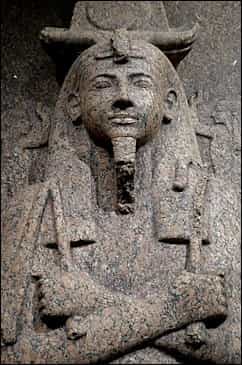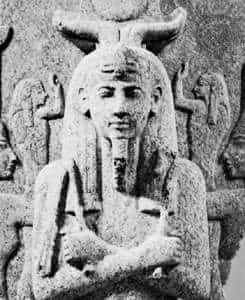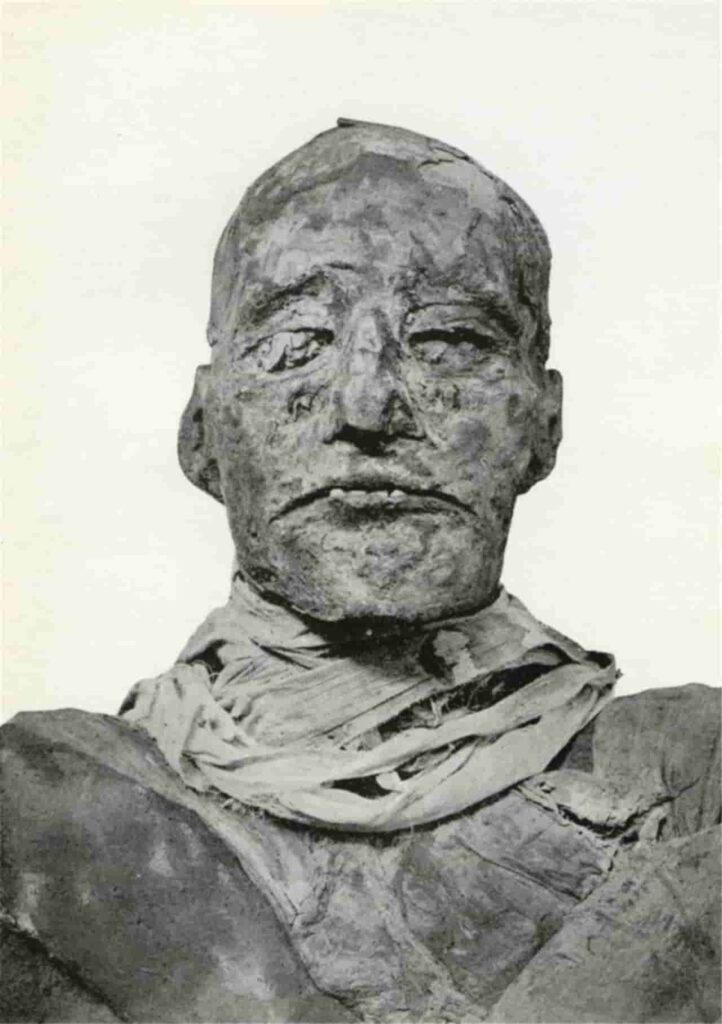Who is Ramses III?
Born 1217 BC. Died 1155 BC
Ramses III is the last great pharaoh, was buried in the tomb called KV11, located on the west bank of the Nile, in the Valley of the Kings. Setnakhte, his father, the founder of the 20th dynasty, undertook its construction, although Ramses III was the one who occupied it.
Domestic policy
Ramses III continued during the thirty years that his reign lasted the work begun by his father, years before, with the aim of putting an end to the moments of anarchy experienced at the death of Siptah.
His role as reorganizer of the administration will be remarkable, since peace and the reestablishment of the cult had already been under way.
This reform is determined by the administrative division into classes: palace officials, provincial officials, military and workers.
Economy
The country’s economy recovered rapidly thanks to the massive influx of tributes from the Asian and Nubian provinces. Foreign trade entered a stage of full vitality, reaching Egyptian lands elegant and expensive products that were in great demand by society, especially from the country of Punt .
This economic development will motivate the recovery of the construction fever, raising new temples, and enriching the existing ones.
Foreign policy
In his time the Hittite Empire and other less important political entities disappeared. The entire Near East was affected, but without the resolute intervention of Ramses III, Egypt would have lost its sovereignty, as during the time of the Hyksos.
Ramses III set himself the goal of achieving the preponderance that Egypt had previously had in foreign policy.
The complicated situation in Asia required a strong response from the Egyptian side. The peoples of the sea had destroyed the Hittite kingdom, also occupying Cyprus and the country of Naharina.
The Egyptian province of Palestine received continuous threats from these invaders that could spread to Egypt itself.
The Libyan border was also dangerous after a reorganization of the nomadic peoples living in that area.
The area of the Nile Delta had received increasing immigration attracted by an easier life, so that during the first years of his reign, Ramses III had to face two groups of Indo-European peoples heading towards the Delta.
In the eighth year of reign, Ramses III went to Asia to face the peoples of the sea.
A naval battle ensued at the mouth of the Nile, where the enemy fleet was annihilated, and that together with the strengthening of the Palestinian border was enough to prevent the fearsome invasion of peoples from the sea, from which Egypt would have hardly recovered, running the same fate as the Hittite Empire.
The withdrawal of the peoples from the sea encouraged Ramses to resume the Asian colonization undertaken by his predecessors: Syria is partially recovered, taking four fortified cities, even reaching the Euphrates regions.
The Libyan border was also dangerous, following a reorganization of the nomadic peoples living in that area.
In the eleventh year of his reign, the Libyan nomadic peoples, eager to settle in the fertile Egyptian territory, advanced towards Memphis ; in the neighborhoods of the city the battle took place, obtaining the Pharaoh the victory.
The prisoners were numerous, and they gave themselves as slaves to the temples. Once this danger was removed, Ramses went to Libya , where there had been a revolt. The Libyan troops were defeated, obtaining the Pharaoh great amount of prisoners.
Constructions of Ramses III
He ordered the construction of major extensions to the temples at Luxor and Karnak, as well as his mortuary temple and the administrative complex at Medinet Habu, which are among the largest and best preserved in Egypt.
Conspiracies and death
His vizier Atribis tried to end his life, and Ramses managed to escape safely.
The second royal wife, Tiye, will try again when she sees how her son was separated from the line of succession.
Despite having the support of senior royal officials, the plot appears to have failed as it was discovered at the last minute, arresting the conspirators and bringing them to justice.
Ramses III was slain
Researchers have discovered a cut in the pharaoh’s throat that confirms the theory that he was the victim of a plot.
Ramses III, the last great pharaoh, was buried in the tomb called KV11, located on the west bank of the Nile, in the Valley of the Kings.
Sethnakht, his father, the founder of the 20th dynasty, undertook its construction, although Ramses III was the one who occupied it.
During the 21th dynasty, his body was probably shrouded again and was transferred to tomb DB320, next to Deir el-Bahari, where it was discovered, in good condition, in 1881. However, due to the extreme fragility of the bandage.
The exact cause of his death could not be known, which has been much debated by historians.
Victim of a conspiracy
Now, a novel forensic analysis of the mummy of Ramses III, carried out with computed tomography (CT), has revealed a deep and wide cut in the pharaoh’s throat, as announced by a team of researchers led by Albert Zink, of the Institute for Mummies and the Iceman of Bolzano (Italy).
During the study carried out at the Egyptian Museum in Cairo, the researchers also discovered a small amulet with the eye of Horus that was inserted into the pharaoh’s wound and that, according to Zink, may have been placed by embalmers in order to provoke his healing in the afterlife.
This research, published in the British Medical Journal, confirms the theory according to which Ramses III was assassinated (beheaded), victim of a plot organized by Tiy, one of his women, and Pentaur, his son, who wanted to seize power.
This hypothesis is based on papyri preserved in the Egyptian Museum in Turin, which describe a judicial process against members of the harem of Ramses III, who tried to overthrow him and seize power.










